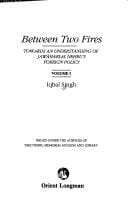Between Two Fires: A Deep Dive into Buehlman's Medieval Horror Masterpiece
Explore Christopher Buehlman’s medieval horror novel "Between Two Fires": its themes, characters, and lasting relevance, in this 800-word deep-dive review.

Introduction to Between Two Fires
Christopher Buehlman’s "Between Two Fires" arrived in 2012 to quiet fanfare and quickly grew into a cult favorite among readers of dark fantasy and literary horror. Set in plague-ravaged fourteenth-century France, the novel follows disgraced knight Thomas, the mysterious young Delphine, and a streetwise priest on a desperate journey to the seat of Christendom. Buehlman blends historical detail, apocalyptic theology, and visceral terror, crafting a story that feels both epic in scope and emotionally intimate.
A Medieval Setting Steeped in Dread
The Black Death killed nearly half of Europe, but in Buehlman’s reimagining the catastrophe is only the first act of a larger cosmic war. Towns empty overnight, wolves roam abandoned fields, and demonic forces claw at the edges of reality. The author’s meticulous research shows in every description of mud-soaked roads, rotting bandages, and crumbling cathedrals. Readers can almost smell the wood smoke, hear distant church bells, and feel the ever-present ache of hunger. This realism grounds the supernatural elements, making each encounter with angels or devils even more unsettling.
Complex Characters Between Hope and Despair
Thomas begins as a mercenary, haunted by sins committed during the Hundred Years’ War. His armor is tarnished, both literally and figuratively, yet he still grasps for a code of honor long abandoned by the world around him. Delphine, whose true identity slowly unspools, alternates between childlike innocence and eerie wisdom. Their relationship provides the emotional spine of the narrative, oscillating between paternal devotion and awe. Father Matthieu, equal parts drunkard and theologian, injects gallows humor while forcing Thomas to confront spiritual questions he would rather ignore.
Their Journey Reflects Inner Conflict
Every village they enter mirrors a stage of the trio’s internal transformation. In one hamlet, survivors cling to relics that may be fraudulent; in another, zealots burn innocents to appease a wrathful God. These episodes test Thomas’s courage, Delphine’s compassion, and Matthieu’s faith. By the time they reach Avignon, seat of the Avignon Papacy, each traveler stands metaphorically—and literally—between two fires: damnation and redemption.
Horror Elements that Linger
Buehlman does not rely on cheap jump scares. Instead, dread builds through unsettling imagery: a choir of plague-stricken children singing in perfect Latin, a demon that speaks only in the voice of a lost lover, angelic beings whose beauty is so blinding it melts flesh. These scenes evoke classic medieval memento mori art, reminding readers that death and the divine stand side by side. The author’s background as a performance poet shows in his lyrical prose, which elevates gruesome moments into darkly beautiful set pieces.
Thematic Depth Beneath the Terror
At its core, "Between Two Fires" explores the tension between free will and predestination. Characters wrestle with whether their suffering is punishment or purposive test, a question that resonates far beyond the fourteenth century. The novel also critiques institutional corruption: bishops hoard wealth, mercenaries sell salvation, and peasants barter faith for survival. Yet Buehlman never sinks into nihilism. Small acts of kindness—a single loaf shared, a prayer whispered for the dead—shine like candles against encroaching darkness.
Stylistic Brilliance
The pacing is deliberate, allowing creeping unease to seep into the reader’s bones. Sentences alternate between muscular bluntness and near biblical cadence, reflecting the clash between earthly brutality and celestial stakes. Dialogue crackles with period authenticity without sliding into incomprehensible archaism. Buehlman’s choice to use present tense adds immediacy, making every sword swing and whispered litany feel urgent.
Why Between Two Fires Still Matters
A decade after publication, the novel remains timely for modern audiences grappling with pandemic aftermath, institutional distrust, and existential anxiety. Thomas’s journey from cynicism to sacrificial hope offers a roadmap for confronting darkness without surrendering humanity. The book also exemplifies how horror can illuminate history, encouraging readers to revisit the Middle Ages with fresh empathy rather than dismissing the era as merely grim or ignorant.
Crossover Appeal
Fans of dark fantasy by authors like Glen Cook or Anna Smith Spark will relish the visceral battle scenes, while readers of literary historical fiction will appreciate the authenticity of setting. Even devotees of theological nonfiction may find unexpected insight in Buehlman’s nuanced portrayal of angelic hierarchies and eschatological lore. This breadth of appeal explains why "Between Two Fires" frequently appears on both horror and fantasy recommendation lists.
Reading Tips for Newcomers
Because the novel blends genres, approach it with an open mind. Keep a historical map of France handy to track the characters’ progress, and consider reading a brief primer on the Avignon Papacy to enhance context. The prose rewards patience; allow space between chapters to savor the language and process the moral dilemmas raised. For book clubs, pair the discussion with medieval chants or plague-era art to deepen atmosphere.
Conclusion: Standing Between Flames
"Between Two Fires" is more than a horror novel; it is a meditation on faith, responsibility, and the fragile spark of goodness that refuses to be extinguished. By fusing meticulously researched history with cosmic stakes, Christopher Buehlman crafts a narrative that lingers long after the last page. Whether you come for the sword fights, the demons, or the philosophical reflection, you will leave with the taste of woodsmoke and hope in equal measure—caught, like Thomas and Delphine, between two fires.



